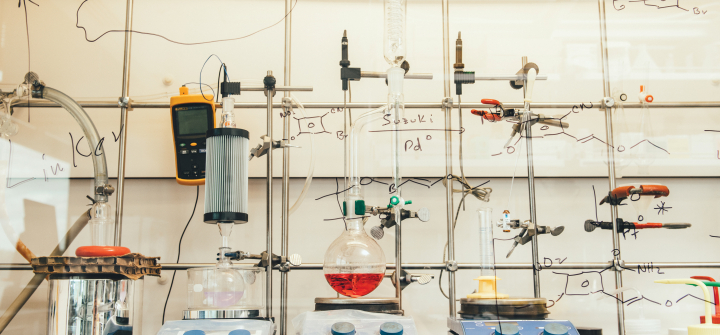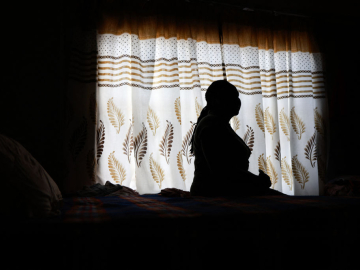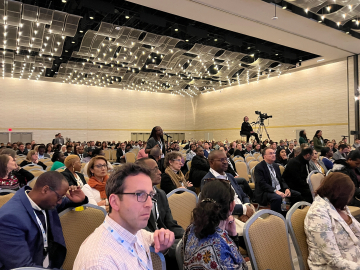How Covid Slowed Basic Science
The pandemic has fundamentally changed the lives and work of basic scientists. Many found themselves locked out of labs for weeks or months. When they were finally allowed back, they were unable to get critical supplies like reagents. Or they were at home taking care of their children, sick with COVID-19 themselves, or refocusing their work to study various aspects of SARS-CoV-2.
The end result was a slowing of science—and the training of scientists—that is being widely discussed among research leaders but is likely to take years to quantify.
At the beginning of the pandemic, Ashani Weeraratna, PhD, E.V. McCollum Professor and Chair of Biochemistry and Molecular Biology at the Johns Hopkins Bloomberg School of Public Health, had to shut down her lab. After a few months, her team came back in shifts. And some of the experiments had to be completely restarted because cell lines had to be shut down so they would not die from neglect.
Weeraratna, who runs her lab like a family, found herself considering her trainees’ personal needs to a greater extent than in the past and taking on new duties. Some of them were fun, such as getting to watch a 3-year-old in her office, so their parent could get work done when daycare shut down.
“We colored and wore masks, and we hung out,” says Weeraratna.
Stressed Scientists
Early in the pandemic, researchers around the US were already getting fed up. A survey of 1,122 tenured and non-tenured faculty by the Chronicle of Higher Education found that in October 2020:
- 35% were thinking about changing careers
- 38% said they were considering retirement
- More than two-thirds said they felt “extremely or very stressed” in the past month, as compared to one-third a few months before the pandemic broke out
While two-thirds of those surveyed described their institution’s response to COVID-19 as “very good” or “somewhat good,” an as-yet-unpublished series of surveys and in-depth interviews with about 1,000 US academics—all mothers—shows something different. The project, started in 2020 by sociologist and Kent State University associate professor Jessica Leveto, PhD, showed that in 2022, many respondents were angry at their universities for pressuring them back into classrooms. (In 2020, fear was predominant, and in 2021, apathy and exhaustion ruled.)
Mothers in academia were especially hard hit, says Leveto, who runs a Facebook group with more than 13,000 members called Ph.D. Mamas. “They’ve had barriers to accessibility and success forever,” she says. “What COVID did with the shift home was exacerbate inequities that were already present and further burn out a fairly burnt-out population of academics.”
Leveto also found that about a quarter of the mothers she surveyed were spending an extra 21 hours or more per week caring for children–making it difficult to keep up with any kind of study or lab work.
Women scientists in developing countries struggled as well. In a June 2020 survey of nearly 1,500 women scientists in 85 countries by the Organization for Women in Science for the Developing World, two-thirds of the respondents said the pandemic disrupted their work by making them unable to get into their labs or offices, or get the equipment they needed. Nearly half said they had fewer hours available to work because of increased responsibilities at home.
Slower, Costlier Research
Meanwhile, getting research done at all has become a challenge. “Things that used to cost us $100 now cost us $400,” says Weeraratna—if they’re even available. The collagen her lab needs for skin cancer studies is often on a 6-month backorder. “We used to be able to call and have it here the next day or the next week,” she says. And delays that affect the cells growing in her lab may mean an experiment has to be started over.
“Everything is slower because it takes longer to get things,” she says.
At the University of Michigan, chemist Anne McNeil, PhD, has been encountering supply chain problems with chemicals, solvents, supplies and gloves. “For a long time we weren’t even allowed to order gloves,” McNeil says. “And the lab is still rationing some supplies and solvents.”
For climate change researcher Jeremiah Henning, PhD, the temporary shutdown of his lab space at the University of South Alabama and loss of students ordered to stay home meant he was working alone at his dining room table. The assistant professor was culturing yeast from pitcher plants he’d brought home from nearby bogs, rather than putting warming chambers over bits of land to see what that did to the health of the flora and fauna.
The Next Generation
McNeil, Weeraratna, and Henning all bemoan the impact on undergraduates, graduate students, and postdocs. Many students didn’t get the chance to do field work or lab work at a crucial stage of their education, losing that chance to fall in love with science, find a mentor, or enjoy the camaraderie that lab work can offer. Or their work was interrupted, giving them the chance to consider higher paying and less intense options for education or employment.
Weeraratna says things are at a crisis point. “I am very concerned about the impact that this pandemic has had on my junior colleagues, from the trainees all the way through to the junior and mid-career faculty,” she says. “The reverberations of this pandemic are going to continue for several years.”
Weeraratna has heard of training grants rejected because the lead investigator had no recent publications––and delays due to COVID-19 were not being considered in the review. While some academic institutions are giving their PhD students extra time to complete their doctoral research, not all are.
The pandemic also made recruiting postdocs tougher. In a survey by the journal Science earlier this year, three quarters of 37 US-based researchers who were actively looking for postdocs said they were having challenges recruiting. Some got no responses to ads, others said the quality of the applicants was low.
In Alabama, Henning sees a threat to the next generation. “It’s really the people aspect—getting people hired, missed research opportunities for students, canceled internships—that have been hugely detrimental to basic research,” he says. “Now we have all these students who haven’t had opportunities to run a pipette or a computer algorithm. I’m worried about how that looks for running a lab going forward.”
Silver Linings
Yet silver linings are out there. At-home work can mean fewer interruptions and more focus, if children can be taken care of.
In Michigan, McNeil asked everybody in her lab to pick a project for a deep dive—developing a new lab skill, learning more about a topic, or learning new software to deal with data that they’ll be able to generate going forward. Together online, several people in the lab wrote a perspective paper on the chemical fate of plastics in the environment that they published in an American Chemical Society journal. They’re hoping the paper will change the direction of research; it has already been viewed more than 21,000 times.
Henning says that while his lab experiments were delayed, his writing productivity increased. “It was stuff that was on my to-do list, only it had been buried deep,” he says.
So, more than 2 years into the pandemic, are the work lives of basic researchers back to normal? “I don’t know if there will ever be a back to normal,” says Henning.
In June, he ran a summer field lab for 17 students, and on the day he was interviewed for this article, 6 of the 17 students were out sick with COVID-19.
Joanne Silberner is an independent journalist living in Seattle. She has been writing about health policy for decades.
Join the 50,000+ subscribers in over 170 countries who rely on Global Health NOW summaries and exclusive articles for the latest public health news. Sign up for our free weekday newsletter, and please share the link with friends and colleagues.
Equipment is seen at the Yale University Lab in New Haven, Connecticut. August 26, 2019. George Etheredge/Bloomberg/Getty.




